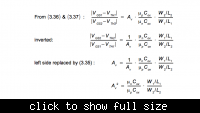20tech11
Junior Member level 3
- Joined
- Oct 23, 2010
- Messages
- 26
- Helped
- 3
- Reputation
- 6
- Reaction score
- 3
- Trophy points
- 1,283
- Location
- Edinburgh, Scotland
- Activity points
- 1,444
Hi all,
Can any one tell me how the DC response of the PMOS diode connected load of NMOS driver, gives VDD- VTH if we neglect the Subthreshold currrent and More than VDD- VTH if we consider the subthreshold current?
My doubt is like when the input voltage is 0, the NMOS is OFF, but a output voltage is VDD- VTH !!! How should it be? As there is no current flow, how the vout can be VDD- VTH?
Please tell me the effect of subthreshold current too!!!
Thanks
Vineeth
Can any one tell me how the DC response of the PMOS diode connected load of NMOS driver, gives VDD- VTH if we neglect the Subthreshold currrent and More than VDD- VTH if we consider the subthreshold current?
My doubt is like when the input voltage is 0, the NMOS is OFF, but a output voltage is VDD- VTH !!! How should it be? As there is no current flow, how the vout can be VDD- VTH?
Please tell me the effect of subthreshold current too!!!
Thanks
Vineeth
